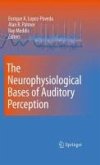Whitlow W. L. Au
The Sonar of Dolphins (eBook, PDF)
112,95 €
112,95 €
inkl. MwSt.
Sofort per Download lieferbar

56 °P sammeln
112,95 €
Als Download kaufen

112,95 €
inkl. MwSt.
Sofort per Download lieferbar

56 °P sammeln
Jetzt verschenken
Alle Infos zum eBook verschenken
112,95 €
inkl. MwSt.
Sofort per Download lieferbar
Alle Infos zum eBook verschenken

56 °P sammeln
Whitlow W. L. Au
The Sonar of Dolphins (eBook, PDF)
- Format: PDF
- Merkliste
- Auf die Merkliste
- Bewerten Bewerten
- Teilen
- Produkt teilen
- Produkterinnerung
- Produkterinnerung

Bitte loggen Sie sich zunächst in Ihr Kundenkonto ein oder registrieren Sie sich bei
bücher.de, um das eBook-Abo tolino select nutzen zu können.
Hier können Sie sich einloggen
Hier können Sie sich einloggen
Sie sind bereits eingeloggt. Klicken Sie auf 2. tolino select Abo, um fortzufahren.

Bitte loggen Sie sich zunächst in Ihr Kundenkonto ein oder registrieren Sie sich bei bücher.de, um das eBook-Abo tolino select nutzen zu können.
This is the definitive technical synthesis of our knowledge of dolphin sonar. Au's book combines anatomical, physiological, mathematical and engineering aspects of dolphin sonar. Enthusiastically received by reviewers as a "classic."
- Geräte: PC
- ohne Kopierschutz
- eBook Hilfe
- Größe: 38.1MB
Andere Kunden interessierten sich auch für
![Advances in Cognitive Neurodynamics (eBook, PDF) Advances in Cognitive Neurodynamics (eBook, PDF)]() Advances in Cognitive Neurodynamics (eBook, PDF)360,95 €
Advances in Cognitive Neurodynamics (eBook, PDF)360,95 €![The Neurophysiological Bases of Auditory Perception (eBook, PDF) The Neurophysiological Bases of Auditory Perception (eBook, PDF)]() The Neurophysiological Bases of Auditory Perception (eBook, PDF)160,95 €
The Neurophysiological Bases of Auditory Perception (eBook, PDF)160,95 €![Computational Neuroscience (eBook, PDF) Computational Neuroscience (eBook, PDF)]() Computational Neuroscience (eBook, PDF)232,95 €
Computational Neuroscience (eBook, PDF)232,95 €![Chemosensory Information Processing (eBook, PDF) Chemosensory Information Processing (eBook, PDF)]() Chemosensory Information Processing (eBook, PDF)112,95 €
Chemosensory Information Processing (eBook, PDF)112,95 €![Sensory-Motor Organizations and Development in Infancy and Early Childhood (eBook, PDF) Sensory-Motor Organizations and Development in Infancy and Early Childhood (eBook, PDF)]() Sensory-Motor Organizations and Development in Infancy and Early Childhood (eBook, PDF)232,95 €
Sensory-Motor Organizations and Development in Infancy and Early Childhood (eBook, PDF)232,95 €![Behavioral Neurobiology of the Endocannabinoid System (eBook, PDF) Behavioral Neurobiology of the Endocannabinoid System (eBook, PDF)]() Behavioral Neurobiology of the Endocannabinoid System (eBook, PDF)160,95 €
Behavioral Neurobiology of the Endocannabinoid System (eBook, PDF)160,95 €![Stairway to the Mind (eBook, PDF) Stairway to the Mind (eBook, PDF)]() Alwyn ScottStairway to the Mind (eBook, PDF)22,95 €
Alwyn ScottStairway to the Mind (eBook, PDF)22,95 €-
-
-
This is the definitive technical synthesis of our knowledge of dolphin sonar. Au's book combines anatomical, physiological, mathematical and engineering aspects of dolphin sonar. Enthusiastically received by reviewers as a "classic."
Dieser Download kann aus rechtlichen Gründen nur mit Rechnungsadresse in A, B, BG, CY, CZ, D, DK, EW, E, FIN, F, GR, HR, H, IRL, I, LT, L, LR, M, NL, PL, P, R, S, SLO, SK ausgeliefert werden.
Produktdetails
- Produktdetails
- Verlag: Springer US
- Seitenzahl: 278
- Erscheinungstermin: 6. Dezember 2012
- Englisch
- ISBN-13: 9781461243564
- Artikelnr.: 43982081
- Verlag: Springer US
- Seitenzahl: 278
- Erscheinungstermin: 6. Dezember 2012
- Englisch
- ISBN-13: 9781461243564
- Artikelnr.: 43982081
- Herstellerkennzeichnung Die Herstellerinformationen sind derzeit nicht verfügbar.
1 Introduction.
1.1 Historical Perspective.
1.2 Some Underwater Acoustics.
1.3 The Time and Frequency Domains.
1.4 Experimental Psychological Methodology.
1.5 Signal Detection Theory.
2 The Receiving System.
2.1 The Outer Ears.
2.2 The Middle Ear.
2.3 The Inner Ear.
2.4 Summary.
3 Characteristics of the Receiving System for Simple Signals.
3.1 Hearing Sensitivity.
3.2 Spectral Analysis Sensitivity.
3.3 Directional Hearing.
3.4 Response Bias and Sensitivity in Hearing.
3.5 Summary.
Appendix: Derivation of the Receiving Directivity Index.
4 Characteristics of the Receiving System for Complex Signals.
4.1 Perception of Click Signals.
4.2 Perception of Time Separation Pitch.
4.3 Summary.
5 The Sonar Signal Transmission System.
5.1 Preliminary Examination of Biosonar Signals.
5.2 Sound Production Mechanism.
5.3 Acoustic Propagation in the Dolphin's Head.
5.4 Summary.
6 Characteristics of the Transmission System.
6.1 The Concept of Near and Far Acoustic Fields.
6.2 The Dolphin Near
to Far
Field Transition Region.
6.3 The Acoustic Field on a Dolphin's Head.
6.4 Directional Pattern of Biosonar Signals.
6.5 Equivalent Planar Circular Aperture.
6.6 Summary.
7 Characteristics of Dolphin Sonar Signals.
7.1 Click Intervals.
7.2 Frequency Characteristics.
7.3 Click Source Levels.
7.4 Number of Clicks and Response Latencies.
7.5 Signals from Other Species.
7.6 Summary.
8 Target Detection Capability of the Active Sonar System.
8.1 The Physics of Acoustic Reflection by Targets.
8.2 Noise
Limited Form of the Sonar Equation.
8.3 Biosonar Detection Capabilities.
8.4 Detection of Complex Echoes.
8.5 Comparison Between a Dolphin and an Ideal Receiver.
8.6 Target Detection in Reverberation.
8.7 Summary.
9 Biosonar Discrimination, Recognition, and Classification.
9.1 Mathematical Tools for the Analysis of Target Echoes.
9.2 Target Size Discrimination.
9.3 Target Structure Discrimination.
9.4 Target Shape Discrimination.
9.5 Delayed Matching to Sample.
9.6 Target Range Difference Discrimination.
9.7 Insights from Human Listening Experiments.
9.8 Summary.
10 Signal Processing and Signal Processing Models.
10.1 Analysis of Dolphin Sonar Signals.
10.2 The Dolphin Modeled as an Energy Detector.
10.3 Signal Processing Models for Target Recognition.
10.4 Artificial Neural Networks and Target Recognition.
10.5 Summary.
11 Comparison Between the Sonar of Bats and Dolphins.
11.1 Comparison of Sonar Signals.
11.2 Comparison of Signal Detection Capabilities.
11.3 Comparison of Target Discrimination Capabilities.
11.4 Doppler Compensation and Flutter Detection.
11.5 Summary.
12 Road Map for Future Research.
12.1 Mechanisms of Sound Reception and Hearing.
12.2 Mechanisms of Sound Production and Transmission.
12.3 Biosonar Capabilities and Mechanisms.
12.4 Signal Processing Models.
12.5 Natural and Dynamic Biosonar Behavior.
12.6 Concluding Remarks.
1.1 Historical Perspective.
1.2 Some Underwater Acoustics.
1.3 The Time and Frequency Domains.
1.4 Experimental Psychological Methodology.
1.5 Signal Detection Theory.
2 The Receiving System.
2.1 The Outer Ears.
2.2 The Middle Ear.
2.3 The Inner Ear.
2.4 Summary.
3 Characteristics of the Receiving System for Simple Signals.
3.1 Hearing Sensitivity.
3.2 Spectral Analysis Sensitivity.
3.3 Directional Hearing.
3.4 Response Bias and Sensitivity in Hearing.
3.5 Summary.
Appendix: Derivation of the Receiving Directivity Index.
4 Characteristics of the Receiving System for Complex Signals.
4.1 Perception of Click Signals.
4.2 Perception of Time Separation Pitch.
4.3 Summary.
5 The Sonar Signal Transmission System.
5.1 Preliminary Examination of Biosonar Signals.
5.2 Sound Production Mechanism.
5.3 Acoustic Propagation in the Dolphin's Head.
5.4 Summary.
6 Characteristics of the Transmission System.
6.1 The Concept of Near and Far Acoustic Fields.
6.2 The Dolphin Near
to Far
Field Transition Region.
6.3 The Acoustic Field on a Dolphin's Head.
6.4 Directional Pattern of Biosonar Signals.
6.5 Equivalent Planar Circular Aperture.
6.6 Summary.
7 Characteristics of Dolphin Sonar Signals.
7.1 Click Intervals.
7.2 Frequency Characteristics.
7.3 Click Source Levels.
7.4 Number of Clicks and Response Latencies.
7.5 Signals from Other Species.
7.6 Summary.
8 Target Detection Capability of the Active Sonar System.
8.1 The Physics of Acoustic Reflection by Targets.
8.2 Noise
Limited Form of the Sonar Equation.
8.3 Biosonar Detection Capabilities.
8.4 Detection of Complex Echoes.
8.5 Comparison Between a Dolphin and an Ideal Receiver.
8.6 Target Detection in Reverberation.
8.7 Summary.
9 Biosonar Discrimination, Recognition, and Classification.
9.1 Mathematical Tools for the Analysis of Target Echoes.
9.2 Target Size Discrimination.
9.3 Target Structure Discrimination.
9.4 Target Shape Discrimination.
9.5 Delayed Matching to Sample.
9.6 Target Range Difference Discrimination.
9.7 Insights from Human Listening Experiments.
9.8 Summary.
10 Signal Processing and Signal Processing Models.
10.1 Analysis of Dolphin Sonar Signals.
10.2 The Dolphin Modeled as an Energy Detector.
10.3 Signal Processing Models for Target Recognition.
10.4 Artificial Neural Networks and Target Recognition.
10.5 Summary.
11 Comparison Between the Sonar of Bats and Dolphins.
11.1 Comparison of Sonar Signals.
11.2 Comparison of Signal Detection Capabilities.
11.3 Comparison of Target Discrimination Capabilities.
11.4 Doppler Compensation and Flutter Detection.
11.5 Summary.
12 Road Map for Future Research.
12.1 Mechanisms of Sound Reception and Hearing.
12.2 Mechanisms of Sound Production and Transmission.
12.3 Biosonar Capabilities and Mechanisms.
12.4 Signal Processing Models.
12.5 Natural and Dynamic Biosonar Behavior.
12.6 Concluding Remarks.
1 Introduction.- 1.1 Historical Perspective.- 1.2 Some Underwater Acoustics.- 1.3 The Time and Frequency Domains.- 1.4 Experimental Psychological Methodology.- 1.5 Signal Detection Theory.- 2 The Receiving System.- 2.1 The Outer Ears.- 2.2 The Middle Ear.- 2.3 The Inner Ear.- 2.4 Summary.- 3 Characteristics of the Receiving System for Simple Signals.- 3.1 Hearing Sensitivity.- 3.2 Spectral Analysis Sensitivity.- 3.3 Directional Hearing.- 3.4 Response Bias and Sensitivity in Hearing.- 3.5 Summary.- Appendix: Derivation of the Receiving Directivity Index.- 4 Characteristics of the Receiving System for Complex Signals.- 4.1 Perception of Click Signals.- 4.2 Perception of Time Separation Pitch.- 4.3 Summary.- 5 The Sonar Signal Transmission System.- 5.1 Preliminary Examination of Biosonar Signals.- 5.2 Sound Production Mechanism.- 5.3 Acoustic Propagation in the Dolphin's Head.- 5.4 Summary.- 6 Characteristics of the Transmission System.- 6.1 The Concept of Near and Far Acoustic Fields.- 6.2 The Dolphin Near- to Far-Field Transition Region.- 6.3 The Acoustic Field on a Dolphin's Head.- 6.4 Directional Pattern of Biosonar Signals.- 6.5 Equivalent Planar Circular Aperture.- 6.6 Summary.- 7 Characteristics of Dolphin Sonar Signals.- 7.1 Click Intervals.- 7.2 Frequency Characteristics.- 7.3 Click Source Levels.- 7.4 Number of Clicks and Response Latencies.- 7.5 Signals from Other Species.- 7.6 Summary.- 8 Target Detection Capability of the Active Sonar System.- 8.1 The Physics of Acoustic Reflection by Targets.- 8.2 Noise-Limited Form of the Sonar Equation.- 8.3 Biosonar Detection Capabilities.- 8.4 Detection of Complex Echoes.- 8.5 Comparison Between a Dolphin and an Ideal Receiver.- 8.6 Target Detection in Reverberation.- 8.7 Summary.- 9 Biosonar Discrimination, Recognition, and Classification.- 9.1 Mathematical Tools for the Analysis of Target Echoes.- 9.2 Target Size Discrimination.- 9.3 Target Structure Discrimination.- 9.4 Target Shape Discrimination.- 9.5 Delayed Matching to Sample.- 9.6 Target Range Difference Discrimination.- 9.7 Insights from Human Listening Experiments.- 9.8 Summary.- 10 Signal Processing and Signal Processing Models.- 10.1 Analysis of Dolphin Sonar Signals.- 10.2 The Dolphin Modeled as an Energy Detector.- 10.3 Signal Processing Models for Target Recognition.- 10.4 Artificial Neural Networks and Target Recognition.- 10.5 Summary.- 11 Comparison Between the Sonar of Bats and Dolphins.- 11.1 Comparison of Sonar Signals.- 11.2 Comparison of Signal Detection Capabilities.- 11.3 Comparison of Target Discrimination Capabilities.- 11.4 Doppler Compensation and Flutter Detection.- 11.5 Summary.- 12 Road Map for Future Research.- 12.1 Mechanisms of Sound Reception and Hearing.- 12.2 Mechanisms of Sound Production and Transmission.- 12.3 Biosonar Capabilities and Mechanisms.- 12.4 Signal Processing Models.- 12.5 Natural and Dynamic Biosonar Behavior.- 12.6 Concluding Remarks.
1 Introduction.
1.1 Historical Perspective.
1.2 Some Underwater Acoustics.
1.3 The Time and Frequency Domains.
1.4 Experimental Psychological Methodology.
1.5 Signal Detection Theory.
2 The Receiving System.
2.1 The Outer Ears.
2.2 The Middle Ear.
2.3 The Inner Ear.
2.4 Summary.
3 Characteristics of the Receiving System for Simple Signals.
3.1 Hearing Sensitivity.
3.2 Spectral Analysis Sensitivity.
3.3 Directional Hearing.
3.4 Response Bias and Sensitivity in Hearing.
3.5 Summary.
Appendix: Derivation of the Receiving Directivity Index.
4 Characteristics of the Receiving System for Complex Signals.
4.1 Perception of Click Signals.
4.2 Perception of Time Separation Pitch.
4.3 Summary.
5 The Sonar Signal Transmission System.
5.1 Preliminary Examination of Biosonar Signals.
5.2 Sound Production Mechanism.
5.3 Acoustic Propagation in the Dolphin's Head.
5.4 Summary.
6 Characteristics of the Transmission System.
6.1 The Concept of Near and Far Acoustic Fields.
6.2 The Dolphin Near
to Far
Field Transition Region.
6.3 The Acoustic Field on a Dolphin's Head.
6.4 Directional Pattern of Biosonar Signals.
6.5 Equivalent Planar Circular Aperture.
6.6 Summary.
7 Characteristics of Dolphin Sonar Signals.
7.1 Click Intervals.
7.2 Frequency Characteristics.
7.3 Click Source Levels.
7.4 Number of Clicks and Response Latencies.
7.5 Signals from Other Species.
7.6 Summary.
8 Target Detection Capability of the Active Sonar System.
8.1 The Physics of Acoustic Reflection by Targets.
8.2 Noise
Limited Form of the Sonar Equation.
8.3 Biosonar Detection Capabilities.
8.4 Detection of Complex Echoes.
8.5 Comparison Between a Dolphin and an Ideal Receiver.
8.6 Target Detection in Reverberation.
8.7 Summary.
9 Biosonar Discrimination, Recognition, and Classification.
9.1 Mathematical Tools for the Analysis of Target Echoes.
9.2 Target Size Discrimination.
9.3 Target Structure Discrimination.
9.4 Target Shape Discrimination.
9.5 Delayed Matching to Sample.
9.6 Target Range Difference Discrimination.
9.7 Insights from Human Listening Experiments.
9.8 Summary.
10 Signal Processing and Signal Processing Models.
10.1 Analysis of Dolphin Sonar Signals.
10.2 The Dolphin Modeled as an Energy Detector.
10.3 Signal Processing Models for Target Recognition.
10.4 Artificial Neural Networks and Target Recognition.
10.5 Summary.
11 Comparison Between the Sonar of Bats and Dolphins.
11.1 Comparison of Sonar Signals.
11.2 Comparison of Signal Detection Capabilities.
11.3 Comparison of Target Discrimination Capabilities.
11.4 Doppler Compensation and Flutter Detection.
11.5 Summary.
12 Road Map for Future Research.
12.1 Mechanisms of Sound Reception and Hearing.
12.2 Mechanisms of Sound Production and Transmission.
12.3 Biosonar Capabilities and Mechanisms.
12.4 Signal Processing Models.
12.5 Natural and Dynamic Biosonar Behavior.
12.6 Concluding Remarks.
1.1 Historical Perspective.
1.2 Some Underwater Acoustics.
1.3 The Time and Frequency Domains.
1.4 Experimental Psychological Methodology.
1.5 Signal Detection Theory.
2 The Receiving System.
2.1 The Outer Ears.
2.2 The Middle Ear.
2.3 The Inner Ear.
2.4 Summary.
3 Characteristics of the Receiving System for Simple Signals.
3.1 Hearing Sensitivity.
3.2 Spectral Analysis Sensitivity.
3.3 Directional Hearing.
3.4 Response Bias and Sensitivity in Hearing.
3.5 Summary.
Appendix: Derivation of the Receiving Directivity Index.
4 Characteristics of the Receiving System for Complex Signals.
4.1 Perception of Click Signals.
4.2 Perception of Time Separation Pitch.
4.3 Summary.
5 The Sonar Signal Transmission System.
5.1 Preliminary Examination of Biosonar Signals.
5.2 Sound Production Mechanism.
5.3 Acoustic Propagation in the Dolphin's Head.
5.4 Summary.
6 Characteristics of the Transmission System.
6.1 The Concept of Near and Far Acoustic Fields.
6.2 The Dolphin Near
to Far
Field Transition Region.
6.3 The Acoustic Field on a Dolphin's Head.
6.4 Directional Pattern of Biosonar Signals.
6.5 Equivalent Planar Circular Aperture.
6.6 Summary.
7 Characteristics of Dolphin Sonar Signals.
7.1 Click Intervals.
7.2 Frequency Characteristics.
7.3 Click Source Levels.
7.4 Number of Clicks and Response Latencies.
7.5 Signals from Other Species.
7.6 Summary.
8 Target Detection Capability of the Active Sonar System.
8.1 The Physics of Acoustic Reflection by Targets.
8.2 Noise
Limited Form of the Sonar Equation.
8.3 Biosonar Detection Capabilities.
8.4 Detection of Complex Echoes.
8.5 Comparison Between a Dolphin and an Ideal Receiver.
8.6 Target Detection in Reverberation.
8.7 Summary.
9 Biosonar Discrimination, Recognition, and Classification.
9.1 Mathematical Tools for the Analysis of Target Echoes.
9.2 Target Size Discrimination.
9.3 Target Structure Discrimination.
9.4 Target Shape Discrimination.
9.5 Delayed Matching to Sample.
9.6 Target Range Difference Discrimination.
9.7 Insights from Human Listening Experiments.
9.8 Summary.
10 Signal Processing and Signal Processing Models.
10.1 Analysis of Dolphin Sonar Signals.
10.2 The Dolphin Modeled as an Energy Detector.
10.3 Signal Processing Models for Target Recognition.
10.4 Artificial Neural Networks and Target Recognition.
10.5 Summary.
11 Comparison Between the Sonar of Bats and Dolphins.
11.1 Comparison of Sonar Signals.
11.2 Comparison of Signal Detection Capabilities.
11.3 Comparison of Target Discrimination Capabilities.
11.4 Doppler Compensation and Flutter Detection.
11.5 Summary.
12 Road Map for Future Research.
12.1 Mechanisms of Sound Reception and Hearing.
12.2 Mechanisms of Sound Production and Transmission.
12.3 Biosonar Capabilities and Mechanisms.
12.4 Signal Processing Models.
12.5 Natural and Dynamic Biosonar Behavior.
12.6 Concluding Remarks.
1 Introduction.- 1.1 Historical Perspective.- 1.2 Some Underwater Acoustics.- 1.3 The Time and Frequency Domains.- 1.4 Experimental Psychological Methodology.- 1.5 Signal Detection Theory.- 2 The Receiving System.- 2.1 The Outer Ears.- 2.2 The Middle Ear.- 2.3 The Inner Ear.- 2.4 Summary.- 3 Characteristics of the Receiving System for Simple Signals.- 3.1 Hearing Sensitivity.- 3.2 Spectral Analysis Sensitivity.- 3.3 Directional Hearing.- 3.4 Response Bias and Sensitivity in Hearing.- 3.5 Summary.- Appendix: Derivation of the Receiving Directivity Index.- 4 Characteristics of the Receiving System for Complex Signals.- 4.1 Perception of Click Signals.- 4.2 Perception of Time Separation Pitch.- 4.3 Summary.- 5 The Sonar Signal Transmission System.- 5.1 Preliminary Examination of Biosonar Signals.- 5.2 Sound Production Mechanism.- 5.3 Acoustic Propagation in the Dolphin's Head.- 5.4 Summary.- 6 Characteristics of the Transmission System.- 6.1 The Concept of Near and Far Acoustic Fields.- 6.2 The Dolphin Near- to Far-Field Transition Region.- 6.3 The Acoustic Field on a Dolphin's Head.- 6.4 Directional Pattern of Biosonar Signals.- 6.5 Equivalent Planar Circular Aperture.- 6.6 Summary.- 7 Characteristics of Dolphin Sonar Signals.- 7.1 Click Intervals.- 7.2 Frequency Characteristics.- 7.3 Click Source Levels.- 7.4 Number of Clicks and Response Latencies.- 7.5 Signals from Other Species.- 7.6 Summary.- 8 Target Detection Capability of the Active Sonar System.- 8.1 The Physics of Acoustic Reflection by Targets.- 8.2 Noise-Limited Form of the Sonar Equation.- 8.3 Biosonar Detection Capabilities.- 8.4 Detection of Complex Echoes.- 8.5 Comparison Between a Dolphin and an Ideal Receiver.- 8.6 Target Detection in Reverberation.- 8.7 Summary.- 9 Biosonar Discrimination, Recognition, and Classification.- 9.1 Mathematical Tools for the Analysis of Target Echoes.- 9.2 Target Size Discrimination.- 9.3 Target Structure Discrimination.- 9.4 Target Shape Discrimination.- 9.5 Delayed Matching to Sample.- 9.6 Target Range Difference Discrimination.- 9.7 Insights from Human Listening Experiments.- 9.8 Summary.- 10 Signal Processing and Signal Processing Models.- 10.1 Analysis of Dolphin Sonar Signals.- 10.2 The Dolphin Modeled as an Energy Detector.- 10.3 Signal Processing Models for Target Recognition.- 10.4 Artificial Neural Networks and Target Recognition.- 10.5 Summary.- 11 Comparison Between the Sonar of Bats and Dolphins.- 11.1 Comparison of Sonar Signals.- 11.2 Comparison of Signal Detection Capabilities.- 11.3 Comparison of Target Discrimination Capabilities.- 11.4 Doppler Compensation and Flutter Detection.- 11.5 Summary.- 12 Road Map for Future Research.- 12.1 Mechanisms of Sound Reception and Hearing.- 12.2 Mechanisms of Sound Production and Transmission.- 12.3 Biosonar Capabilities and Mechanisms.- 12.4 Signal Processing Models.- 12.5 Natural and Dynamic Biosonar Behavior.- 12.6 Concluding Remarks.







